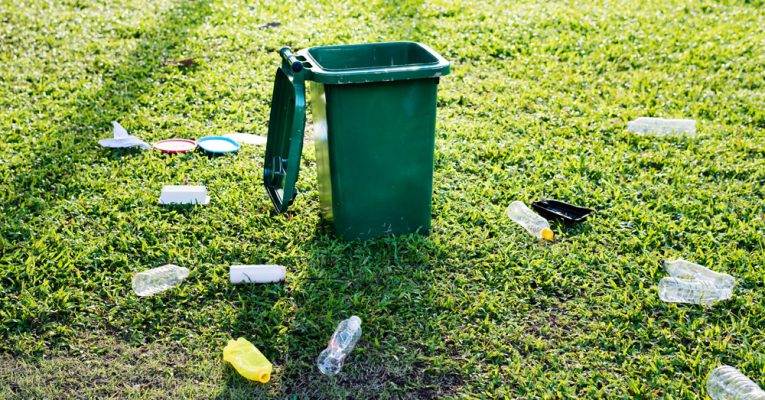
How to Organize Garbage and Recycling at Home
June 3, 2019
by Riya Sander
Recycling is not an easy endeavor to take, no one wants to spend hours memorizing recycling symbols or sorting metals, plastics, papers, glasses, batteries, and electronics – but it is absolutely necessary. After all, a zero-waste lifestyle is an excellent benefit for both your wallet and the environment.
Luckily, there are simple and easy ways for garbage segregation at home. They will help you establish a recycling system, which you can stick to without putting in too much effort. Read on to adopt and enjoy a greener life.
1. Accepted Garbage
Find out what your local recyclers rejects and accepts. Simply visit or call the Recycling Centre. Remember to set aside items like electronics as they require special treatment. Some curbside recycling programs won’t pick up E-waste as well as hazardous materials. Even though, several municipalities provide an annual drop-off program to accept such items.
The most common home waste removal programs are dual stream and single-stream recycling. The single-stream recycling program combines glass, metals, plastics, cardboard, and paper. Low-quality recycling, higher contamination, and collection costs are much lower on this program.
Dual stream recycling program separate recycling – you separate the materials yourself. The program has lower contamination, collected recyclables have low costs, high-quality recycling, and more recovery material.
If you want to recycle items like electronics, wood, bulbs, and batteries, consult with your local community or office on what recycling programs provide the recycling.

2. Study Your Garbage or Trash
Study your garbage, before you get the bins. That way, you will determine the size and type of bins or containers you will need. A family that drinks a lot of soda and juices will need a large bin for the bottles and cans.
Consider buying smaller bins in general. Smaller bins save space and they look great. However, if your recyclables are big like old sports, equipment, electronics, get big containers. Taller bins are also stylish and most have handles, you can easily carry heavy load or garbage inside.
3. Know Your Recyclables
Begin by learning your recyclables. Metals are among the most common recyclables – please understand what non-ferrous metals are – they are strong, they do not rust, and they can be sold for cash. Cardboards, glasses, plastics, wood, batteries, bulbs, and electronics are common recyclables as well.
Do not recycle crystal, window glass, mirror, contaminated glass with food waste, dirt, and stones, heat-resistant glass, ceramics, plastic or metal lids and caps, plastic or foam food containers, Styrofoam, and plastic produce and grocery sacks.
4. Have a Storage Space
Is there room in your pantry, mudroom, laundry room, utility closet, garage, or back porch? Or maybe a room for recycling bins in your kitchen, in a pull-out drawer or under a counter? Make sure to dedicate a space that is convenient for the garbage bins. Consider keeping the bins in a spot that is close to where you recycle.
Scattering the bins around your home will create a false sense of having too much garbage. Line them to optimize your space especially if you live in a small townhouse.

5. Bin Shopping
Use dedicated bins for your recycling and organize them by label or color. This way, you will make recycling accessible and easy for any member of your household. Also, develop a routine for recycling and emptying trash. Recycling is actually a simple chore, a kid over the age of 8 can do. If a child is involved, make sure there are no cans with sharp edges.
The number of bins you will get will depend on what you are planning to recycle and the type of program. Keep in mind that you will need non-recyclable garbage bins as well.
6. Prepare the Garbage
Prepare all garbage prior to recycling with your local recycling program guidelines. For instance, you can prep the metals cans like pop cans and soup cans by emptying and giving them a quick rinse. For the Coffee cups – First, separate the plastic lids, and then recycle them.
Unfortunately, most communities don’t accept stretch wrap, pasta bags, single-serving food wrappers, wrap from cheese or meat, and stand-up pouch bags. Also, if your local community recycling programs do not reject zipper bags, plastic bags, bread bags, shopping or grocery bags, dry cleaning bags, outer milk bags, frozen or fresh vegetable and fruit bags, packages of diapers, and sandwich bags – put all these unwanted stuff in one plastic bag and then tie shut.
We believe that this piece focusing on how to segregate garbage at home was helpful. Learn how to recycle items – common as well as the not-so-common. Also, be creative and proactive because not every garbage item will be accepted in your area. You can take the rejected recyclables to another city-run recycling center. Lastly, take pride in your determined attempt of trying to help the environment; enjoy your greener life.
Subscribe to the Organize-It blog for more organization tips and tricks. Learn more at Organize-It.com.